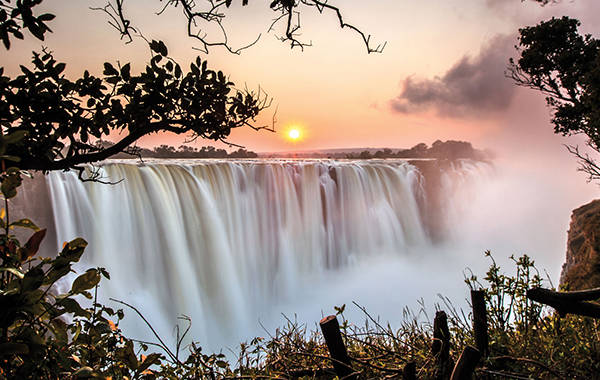Celebrating tourism milestones

Benjamin Chivandire Correspondent
Today, Zimbabwe joins the rest of the world in celebrating World Tourism Day under the Theme “Tourism for Inclusive Growth.”
September is the month spared by the United Nations World Trade Organisation (UNWTO) to celebrate global tourism. The Day has been commemorated on September 27 since 1980, to mark the anniversary of the adoption of the statutes of the organisation in 1970, paving the way for the establishment of the UNWTO on November 1, 1975.
Tourism is one of the crucial sectors in any country, as it plays a fundamental role in improving economies. It provides employment opportunities, generates income and diversifies the economy.
The sector is also key to environmental protection and promotion of cross-cultural awareness, among other variables.
Although it was almost brought to its knees by the global Covid-19 pandemic, tourism has been, and still is, one of the fastest-growing industries in the world.
In terms of global exports, the sector ranks fourth after energy, fuels and food.
The ingredients to this success are relative peace, and a degree of economic development in a positive trajectory in any country.
According to the Zimbabwe Tourism Authority (ZTA), tourism contributed 7, 2 and 6,5 percent of the country’s gross domestic product (GDP) in 2018 and 2019, respectively.
Furthermore, the gradual opening of the sector in the first quarter of 2021 saw positive trends of nearly 70 000 tourists.
Moreso, the Second Republics’ thrust to revitalise the industry is commendable, as the Government disbursed a US$20 million relief fund for the continued survival of the sector in a bid to mitigate the impacts of the Covid-19 pandemic.
Tourism contributes immensely to Government revenue through licence fees, customs and excise duty, value added tax (VAT) on tourism services, landing fees, passenger service charges, entry fees to game parks as well as income tax levied on employees in the industry.
The generated revenues play a pivotal role in the overall growth of the economy.
In both developed and developing countries, tourism has emerged as a major driver of economic and social development through generation of foreign earnings; creation of incomes, and stimulation of domestic consumption.
Also, it creates employment for both low-skilled and semi-skilled workers, with a bias towards women and youths in urban and rural areas.
Tourism has also been described as having a snowball effect in contributing to economic expansion, since the development of new tourism destinations is often accompanied by arrival of new businesses.
Zimbabwe has always been a favourite destination for tourists from the four corners of the world.
The country’s tourism industry has thrived due to its endowment of tourist attractions.
Across its length and breadth, Zimbabwe has unique attractions, which are rarely found anywhere else in the world. It is a comparative advantage that turns into a competitive one as far as tourism is concerned.
Zimbabwe is home to one of the Seven Wonders of the World, Victoria Falls (Mosi-oa-Tunya, or The Smoke that Thunders), which stands as the premier spot.
Shared with Zambia, the spot offers one of the highest global bungee jumping sites at the Victoria Falls Bridge.
A multiplicity of adventure activities are offered around Victoria Falls and along the Zambezi River. These include; white-water rafting, canoeing, elephant rides, walking with lions, and game viewing in the Zambezi National Park.
In addition, the town of Victoria Falls was granted city status in December 2020, becoming the first city in Matabeleland North, and only the second after Bulawayo in the Matabeleland provinces.
The decision was in recognition of its national and global importance as the capital and hinge of the country’s tourism.
There are extensive game viewing opportunities in the country’s national parks; which include Hwange, Gonarezhou (a part of the Great Limpopo Transfrontier Conservation Area), the Matopos, the Zambezi, Mana Pools (a World Heritage Site), and Nyanga.
The use of helicopters offers a different experience as compared to using vehicles and motorised boats.
The Great Zimbabwe Monument is the second-largest stone structure in Africa after the pyramids of Egypt.
The country derives its name from this structure whose name in Shona means “Houses of stones”.
This was the centre of the Munhumutapa Empire that thrived in the 16th and 17th centuries. Replicas of the Great Zimbabwe stonework are found in various parts of the country, with the most outstanding being Khami Ruins in Bulawayo.
Accelerated growth in the tourism industry is also anticipated under the mantra, Zimbabwe is Open for Business, which makes the country a lucrative investment and tourism destination.
In July this year, Zimbabwe became the first African country to exempt all SADC countries from visa requirements, which is a milestone in fostering international trade and tourism in the region.
By the same token, the Southern African country is stepping up its engagement in tourism exchange through the Kaza UniVisa, available to 65 nations, allowing visitors to Zimbabwe and Zambia access to the two countries for a period of one month.
This was done with the view that through its various linkages, tourism development will contribute to economic diversification, and reduce excessive over-dependence on the exploitation of conventional raw materials.








Comments